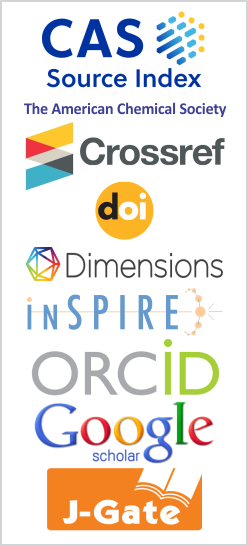The Use of a Recurrent Neural Network for Forecasting Ozone Concentrations in the City of Agadir (Morocco)
DOI:
https://doi.org/10.26713/jamcnp.v7i3.1545Keywords:
Recurrent neural network, Machine learning, Pollution, Air quality, Ozone, MoroccoAbstract
Air quality is a complex issue which depends mutually on source emission, land topography, meteorological parameters and used mathematical tools for forecasting its dispersion. One of major toxic gas is ozone which could be dangerous to human health. The present work has been developed to forecast ozone concentrations in the city of Agadir using a Recurrent Neural Network (RNN). Predicting ozone concentrations will provide useful information, especially, for decision makers in order to prevent and reduce the ozone human health impacts. The data was collected in the most polluted area in the city using a mobile monitoring station during a period of 60 days. We have tested different neural network architectures and we found that the 1-hour forecast model, whose input parameters are a combination of meteorological parameters as well as CO and SO\(_2\), give the most optimal results. Coefficient of Correlation (CC), Root Mean Square Error (RMSE) and Mean Absolute Error (MAE) were used to evaluate the statistical agreement between observed and predicted values. The model successfully predicts the ozone concentration by a bias of 4 \(\mu\)g.m\(^{-3}\) over 24 hours and which a correlation coefficient is more than 80%. This work highlights the ability of the recurrent neural networks to forecast air pollutant concentrations in urban areas.
Downloads
References
Y. Bai, B. Zeng, C. Li and J. Zhang, An ensemble long short-term memory neural network for hourly PM 2.5 concentration forecasting, Chemosphere 222 (2019), 286 – 294, DOI: 10.1016/j.chemosphere.2019.01.121.
M. Banja, D.K. Papanastasiou, A. Poupkou and D. Melas, Development of a short–term ozone prediction tool in Tirana area based on meteorological variables, Atmospheric Pollution Research 3 (2012), 32 – 38, DOI: 10.5094/APR.2012.002.
S.V. Belavadi, S. Rajagopal, R. Ranjani and R. Mohan, Air quality forecasting using LSTM RNN and wireless sensor networks, Procedia Computer Science 170 (2020), 241 – 248, DOI: 10.1016/j.procs.2020.03.036.
M. Catalano, F. Galatioto, M. Bell, A. Namdeo and A.S. Bergantino, Improving the prediction of air pollution peak episodes generated by urban transport networks, Environmental Science & Policy 60 (2016), 69 – 83, DOI: 10.1016/j.envsci.2016.03.008.
A. Chirmata, R. Leghrib and I.A. Ichou, Implementation of the air quality monitoring network at Agadir city in Morocco, Journal of Environmental Protection 8 (2017), 540 – 567, DOI: 10.4236/jep.2017.84037.
A.C. Comrie, Comparing neural networks and regression models for ozone forecasting, Journal of the Air & Waste Management Association 47 (1997), 653 – 633, DOI: 10.1080/10473289.1997.10463925.
D. Dunca, A. Pohoata and S. Lordache, Using wavelet-feedforward neural networks to improve air pollution forecastion in urban environments, Environmental Monitoring and Assessment 187(7) (2015), 477, DOI: 10.1007/s10661-015-4697-x.
J.L. Elman, Finding structure in time, Cognitive Science 14 (1990), 179 – 211, DOI: 10.1207/s15516709cog1402_1.
EPA, Health Effects of Ozone Pollution, United States Environmental Protection Agency, https://www.epa.gov/ground-level-ozone-pollution/health-effects-ozone-pollution.
M.T. Hagan, H.B. Demuth and M.H. Beale, Neural Network Design, 1st edition, PWS Publishing Company, Boston, p. 736 (1996).
J. Lelieveld and P.J. Crutzen, Influence of cloud and photochemical processes on tropospheric ozone, Nature 343 (1990), 227 – 233, DOI: 10.1038/343227a0.
S.C. Liu, M. Trainer, F.C. Fehsenfeld, D.D. Parrish, E.J. Williams, D.W. Fahey, G. Hübler, P.C. Murphy, Ozone production in the rural troposphere and the implications for regional and global ozone distributions, Journal of Geophysical Research: Atmospheres 92 (1987), 4191 – 4207, DOI: 10.1029/JD092iD04p04191.
R. Ma, J. Ban, Q. Wang and T. Li, Statistical spatial-temporal modeling of ambient ozone exposure for environmental epidemiology studies: a review, Science of the Total Environment (2019), DOI: 10.1016/j.scitotenv.2019.134463.
J. Mao, L. Wang, C. Lu, J. Liu, M. Li, G. Tang, D. Ji, N. Zhang and Y. Wang, Meteorological mechanism for a large-sclae persistent severe ozone pollution event over eastern China in 2017, Journal of Environmental Sciences 92 (2020), 187 – 199, DOI: 10.1016/j.jes.2020.02.019.
X. Ren, Z. Mi and P.G. Georgopoulos, Comparison of machine learning and land use regression for fine scale spatiotemporal estimation of ambient air pollution: modeling ozone concentrations across the contiguous United States, Environment International 142 (2020), 105827, DOI: 10.1016/j.envint.2020.105827.
P. Zanis, P. Hadjinicolaou, A. Pozzer, E. Tyrlis, S. Dafka, N. Mihalopoulos and J. Lelieveld, Summertime free-tropospheric ozone pool over the eastern Mediterranean/Middle East, Atmospheric Chemistry and Physics 14 (2014), 115 – 132, DOI: 10.5194/acp-14-115-2014.
J. Zhang and W. Ding, Prediction of air pollutants concentrations based on an extreme learning machine: the case of Hong Kong, International Journal of Environmental Research and Public Health 14(2) (2017), 114, DOI: 10.3390/ijerph14020114.
Downloads
Published
How to Cite
Issue
Section
License
Authors who publish with this journal agree to the following terms:- Authors retain copyright and grant the journal right of first publication with the work simultaneously licensed under a CCAL that allows others to share the work with an acknowledgement of the work's authorship and initial publication in this journal.
- Authors are able to enter into separate, additional contractual arrangements for the non-exclusive distribution of the journal's published version of the work (e.g., post it to an institutional repository or publish it in a book), with an acknowledgement of its initial publication in this journal.
- Authors are permitted and encouraged to post their work online (e.g., in institutional repositories or on their website) prior to and during the submission process, as it can lead to productive exchanges, as well as earlier and greater citation of published work.




